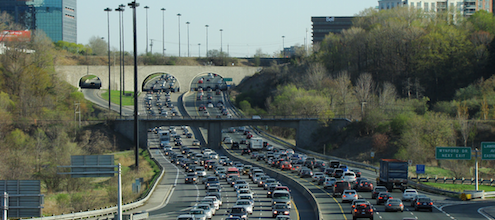
The Case for Extended Producer Responsibility in Canada
Recycling appears to be broken in Canada. In 2016, a dismal 9% of our plastic waste was recycled. More recently, recycling programs have struggled since China—the world’s biggest recycler—stopped buying unprocessed plastics, paper, and metals. Some local recycling programs have ground to a halt as a result, while other programs are stockpiling, burning, and landfilling recyclables. Despite all this, we expect recycling programs to turn more of our waste into something new and useful again.
This blog unpacks an old idea gaining new momentum across Canada: Extended Producer Responsibility (EPR for short). EPR programs make manufacturers physically and financially responsible for recycling their materials after they’ve been used by consumers. In other words, it forces manufacturers to collect, process, and repurpose that empty egg carton in your blue box or that old mattress your in-laws keep complaining about.
First principles
Before getting into the specifics of EPR, it’s helpful to look at the big picture on waste management challenges in Canada.
One big problem is fundamental: Waste disposal in Canada is artificially cheap. Landfills often charge rates that are less than the full financial and environmental cost of running the service. At the same time, households don’t pay directly for curbside garbage collection. Most Canadian homeowners pay for garbage collection through their property taxes, strata fees, or monthly fees, which are then passed on to tenants (like me) in rent.
Cheap garbage disposal undermines the entire recycling industry. Like water running downhill, waste management always finds the path of least resistance. Throwing our waste in a landfill costs less than $50 per tonne in many towns and cities across Canada (some landfills even accept residential garbage for free). Recycling is almost always more expensive. It’s no surprise over 75% of our waste ends up in landfills.
Going beyond disposal pricing
Yet even if all municipalities in Canada charged disposal fees that reflected the true cost—an unlikely reality—it wouldn’t be enough to level the playing field. Some of the biggest manufacturers in Canada are multinational corporations that serve global markets. Higher disposal prices in Canada would encourage us to look for more recyclable products, or products made with fewer materials, but global manufacturers are unlikely to respond. The Canadian market is simply too small to drive such change.
At the same time, our local governments have historically borne the cost and responsibility of managing household waste, not manufacturers. As a result, the recyclability of products and packaging has received little attention. The difficulties with collecting and recycling products only become apparent when products and packaging have already hit the waste stream.
Upheaval in global recycling markets is amplifying these problems. China, as the largest buyer of recyclables, has banned or restricted waste imports coming from western countries, in part due to health and environmental concerns associated with managing low-quality materials. As other countries in Asia follow China’s lead, many recycling programs in Canada are struggling to find markets for their materials, particularly low-grade plastics. Prices have plunged, and municipal budgets are taking a serious hit. Some blue box programs have pared back what they accept, while others have shut down entirely.
Extending responsibility
All of these issues take us back to the rationale for Extended Producer Responsibility. Done right, EPR can help address many of these deep-seated and dynamic problems. It can complement waste disposal pricing by tackling the problem in a different way.
At its core, EPR makes producers legally and financially responsible for the waste generated from their products and materials. In doing so, EPR transfers the responsibility of recycling from municipalities to the companies that produce the materials in the first place. EPR programs can be developed for a broad range of product categories, including curbside recyclables (i.e., packaging and paper), tires, electronics, batteries, paint, used oil, and pharmaceuticals.
Similar to disposal pricing, EPR programs use a market-based approach to increasing waste diversion and prevention. Programs require firms cover the cost of managing and recycling their materials and include these costs like any other input into manufacturing costs. Manufacturers that choose to use highly recyclable materials can pay lower fees relative to those that use low-grade, hard-to-recycle materials. When designed well, the resulting prices create incentives to design products that generate less waste and encourage the 3Rs: reduce, reuse and recycle.
The other big benefit of EPR programs is that municipalities are no longer financially responsible for operating recycling programs. Recycling costs are no longer offloaded on local governments, which can reduce utility fees or free up money to pay for other things, like tax cuts or better public services. Perhaps more importantly, municipalities no longer have to grapple with volatile recycling markets. Manufacturers must not only collect the materials, but they also have to find a buyer (or manage the materials themselves).
Going deeper
The case for EPR in Canada is compelling. It does what disposal pricing cannot: it makes manufacturers directly responsible for the waste generated from their products. It provides incentives to continuously improve how recycling systems operate and how their products are designed and made.
Implementing EPR in Canada has, however, proven difficult. Our next blog looks at how EPR is working (and not working), along with some key principles for reform.




Comments are closed.